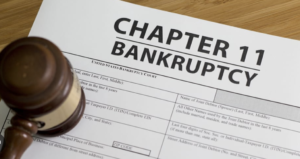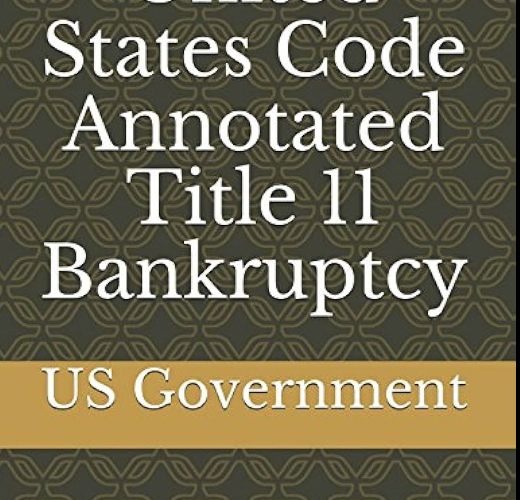Title 11 of the United States Code, also known as the Bankruptcy Code, is a crucial piece of legislation that governs bankruptcy proceedings in the United States. Bankruptcy is a legal process that provides individuals and businesses with the opportunity to eliminate or repay their debts under the protection of the federal court. This comprehensive guide will delve into the history, purpose, and various types of bankruptcy under Title 11, shedding light on its importance for individuals and businesses alike.

title 11-of the-united states code
History and Purpose of Title 11
The origins of Title 11 can be traced back to the early days of the United States. The Founding Fathers recognized the need for a bankruptcy system that would provide a fresh start for debtors while ensuring fairness for creditors. The first federal bankruptcy law was enacted in 1800 and has since undergone numerous revisions and updates. The primary purpose of Title 11 is to strike a balance between the interests of debtors and creditors, offering a framework for debt relief and financial recovery.
Types of Bankruptcy Under Title 11
Title 11 provides for different types of bankruptcy, each catering to specific circumstances. The most common types are Chapter 7, Chapter 11, and Chapter 13 bankruptcy.
Chapter 7 Bankruptcy: Liquidation and Asset Distribution
Chapter 7 bankruptcy, often referred to as liquidation bankruptcy, is designed for individuals and businesses with significant debt and limited ability to repay. Under Chapter 7, a court-appointed trustee liquidates the debtor’s non-exempt assets to repay creditors. This type of bankruptcy provides a fresh start for debtors by discharging most of their remaining debts.
Chapter 11 Bankruptcy: Reorganization for Businesses
Chapter 11 bankruptcy is primarily intended for businesses facing financial distress. It allows businesses to reorganize their debts and operations while continuing their operations. This form of bankruptcy offers a chance for businesses to regain profitability and repay their debts over time.
Chapter 13 Bankruptcy: Debt Repayment Plan for Individuals
Chapter 13 bankruptcy provides individuals with a structured debt repayment plan. Debtors with a regular income can propose a plan to repay their debts over a period of three to five years. Chapter 13 allows individuals to retain their assets while catching up on missed payments and reducing the overall debt burden.
The Role of Bankruptcy Courts in Title 11
Bankruptcy courts play a crucial role in overseeing bankruptcy cases and ensuring the fair and efficient administration of the bankruptcy process. These specialized courts have the authority to interpret and apply the provisions of Title 11, resolve disputes between debtors and creditors, and approve or reject proposed repayment plans. Bankruptcy judges, appointed to the bench, preside over bankruptcy cases and make decisions based on the facts and circumstances presented.
The Automatic Stay Provision in Title 11
One of the essential features of title 11 of the united states code is the automatic stay provision. When a bankruptcy case is filed, an automatic stay goes into effect, halting all collection actions and legal proceedings against the debtor. The automatic stay grants debtors temporary relief from the pressure of debt collection, providing them with the opportunity to reorganize their finances and work towards a fresh start. However, there are exceptions to the automatic stay, such as certain criminal proceedings or actions related to child support or alimony.
Exemptions and Protections Under Title 11
Title 11 also provides for certain exemptions and protections to safeguard debtors’ assets during bankruptcy proceedings. These exemptions vary from state to state but often include provisions for protecting a debtor’s primary residence, personal property, and retirement accounts. Exemptions and protections aim to ensure that debtors have a fair chance at rebuilding their lives after bankruptcy and do not face undue hardship.
Recent Amendments and Updates to Title 11
Over the years, Title 11 has undergone several amendments and updates to address evolving economic and societal needs. These changes aim to improve the bankruptcy process, streamline procedures, and enhance protections for debtors and creditors alike. It is essential for individuals and businesses to stay informed about these updates to ensure they navigate the bankruptcy system effectively.
Common Misconceptions About Title 11
There are several common misconceptions surrounding bankruptcy and Title 11. One prevalent misconception is that bankruptcy signifies failure or irresponsibility. In reality, bankruptcy is a legal and legitimate means for individuals and businesses to address overwhelming debt and start afresh. Another misconception is that bankruptcy will result in the loss of all assets. While some assets may be liquidated, many are protected under exemptions provided by Title 11. It is important to dispel these misconceptions and understand the benefits and limitations of bankruptcy under Title 11.
Seeking Legal Advice for Bankruptcy Cases
Navigating the complexities of bankruptcy law can be challenging without proper legal guidance. It is highly recommended for individuals and businesses considering bankruptcy to seek advice from experienced bankruptcy attorneys. An attorney specializing in bankruptcy law can provide valuable insights, assist in determining the most appropriate type of bankruptcy, guide through the filing process, and represent the client’s interests in court. Professional legal advice can help debtors make informed decisions and maximize the benefits of bankruptcy under title 11 of the united states code.
Conclusion: Importance of Understanding Title 11 for Individuals and Businesses
Title 11 of the United States Code is a crucial framework that provides individuals and businesses with a path towards financial recovery. Understanding the history, purpose, and various types of bankruptcy under Title 11 is essential for anyone facing overwhelming debt. By comprehending the provisions of Title 11 and seeking appropriate legal advice, debtors can navigate the bankruptcy process effectively, protect their assets, and work towards a fresh start. It is important to dispel misconceptions surrounding bankruptcy and recognize its role as a legitimate and valuable tool for debt relief and financial rehabilitation.

